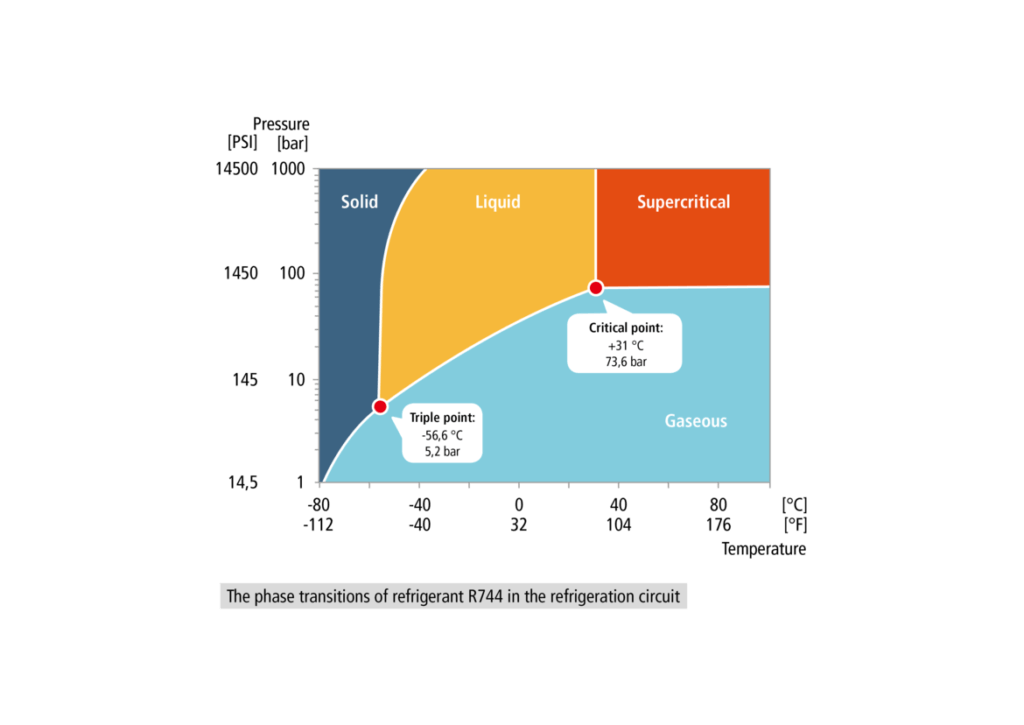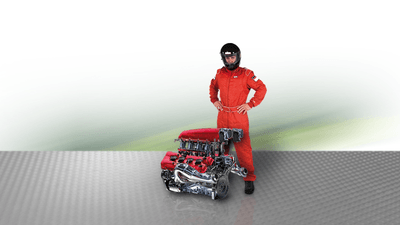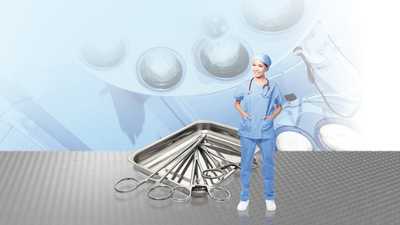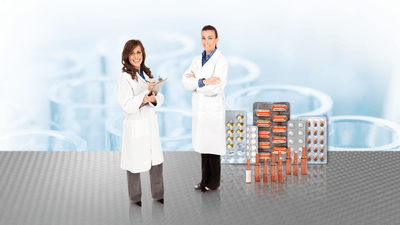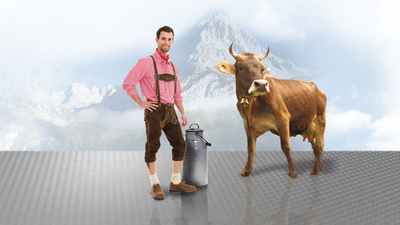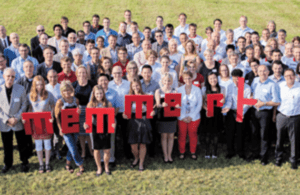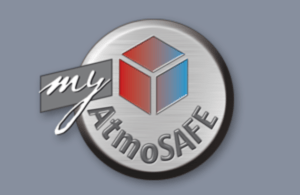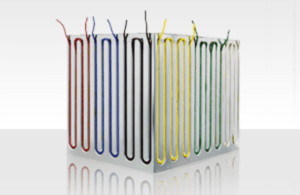Climate-friendly refrigerant CO2 (R744)
The compression refrigeration systems in the Memmert climate chamber ICHeco and in the cooled incubator ICPeco operate with the refrigerant CO2 (R744). Thanks to this climate-friendly refrigerant, the units are not only more environmentally friendly, but also more powerful than comparable temperature control appliances cooled with fluorinated greenhouse gases such as R134a.
The refrigerant CO2, also known in the air conditioning industry as R744, was already known before 1900. Due to the environmentally harmful properties of synthetic refrigerants, it has been experiencing a renaissance for several years. Memmert has also committed itself to the use of natural, environmentally friendly refrigerants. For the eco versions of the constant climate chambers ICH and the cooled incubators ICP, a modern refrigeration control system has been developed that makes the constant climate chamber ICHeco and the cooled incubator ICPeco just as efficient as systems with synthetic refrigerants. In addition, they can fully exploit their clear advantages in terms of cooling capacity and climate friendliness. The basic principle: The appliance regulates the temperatures in the working area exclusively via the cooling system – without energy-intensive back heating.
Refrigerant CO2 with top marks for climate friendliness
The GWP value (Global Warming Potential) is used to compare the effects of substances on the warming of air layers near the ground and thus on the greenhouse effect. The refrigerant used in Memmert ICHeco/ICPeco appliances with the abbreviation R744 and the chemical molecular formula CO2 has a GWP value of 1 and is therefore almost climate-neutral. By contrast, the refrigerant R134a used in many comparable temperature control appliances with a GWP of 1430 after release contributes 1430 times as strongly to the greenhouse effect.
R744 does not contain chlorine and is neither flammable nor toxic. Therefore it does not cause ozone depletion in the atmosphere. CO2 is a by-product of many industrial processes and is available in virtually unlimited quantities. Therefore, far less energy is required for manufacture than for synthetic, fluorinated refrigerants.
Improved cooling capacity thanks to CO2 refrigerant
The high volumetric cooling capacity of CO2(R744) enables a space-saving design of compressor, heat exchangers and pipes. Thanks to the excellent heat transfer of CO2, Memmert eco appliances score with faster cooling-down speeds compared to appliances with synthetic refrigerants.
F-Gas regulation provides incentives for conversion
The European Union’s new F-gas regulation aims to reduce emissions of fluorinated greenhouse gases by around 90% by 2050 compared with 1990. Measures include gradual reductions in volumes and bans on placing it on the market.
Background information: The cooling circuit in the compression refrigeration system
Regardless of the refrigerant, the operating principle of a temperature control appliance with compression refrigeration system is essentially the same. In order to cool the chamber load, the cooling liquid extracts heat from the interior of a climate chamber or cooled incubator and releases it into the environment. Refrigeration technology makes use of the various aggregate states of cooling liquids. Liquids that evaporate extract heat from the environment and vice versa. The phases of the cooling circuit compressing/pressure increase (compressor), condensing/heat dissipation, throttling/pressure reduction and evaporating/heat absorption, in which the aggregate state of the refrigerant changes, are also identical (see Fig. 1).
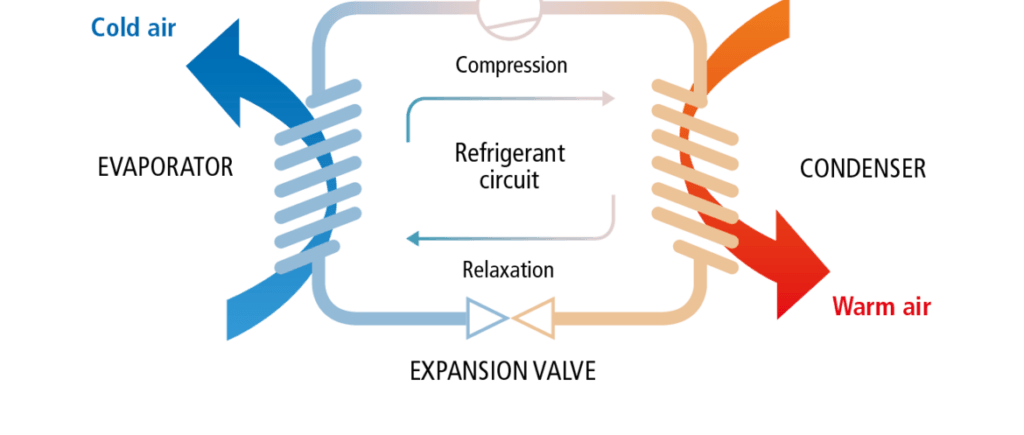
Special feature of transcritical CO2 refrigeration equipment
The temperature and pressure of gases and thus also refrigerants are proportional to each other below the so-called critical point. The higher the pressure at the same volume, the higher the temperature (and vice versa), so the gas heats up at increased pressure in the compressor. With CO2 cooling, there is now a special feature: the critical point of R744 is very low at + 31 ℃ (at 73.6 bar).
In transcritical operation beyond the critical point, gas can no longer be liquefied by pressure and the relationship between temperature and pressure no longer exists. The refrigerant remains in the state between liquid and gaseous. Therefore, a gas cooler for continuous cooling of the gas replaces the condenser. Due to the temperature difference required for heat transfer, the limit for heat transfer to the environment by condensation of the refrigerant is around 25°C in practice. In most cases, refrigeration equipment is therefore operated in a laboratory environment with normal room temperatures above the critical point – i.e. with high pressures.
